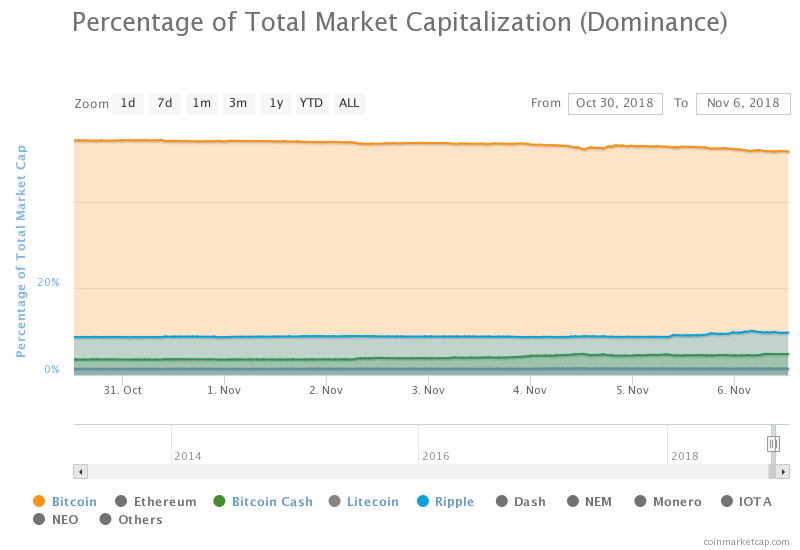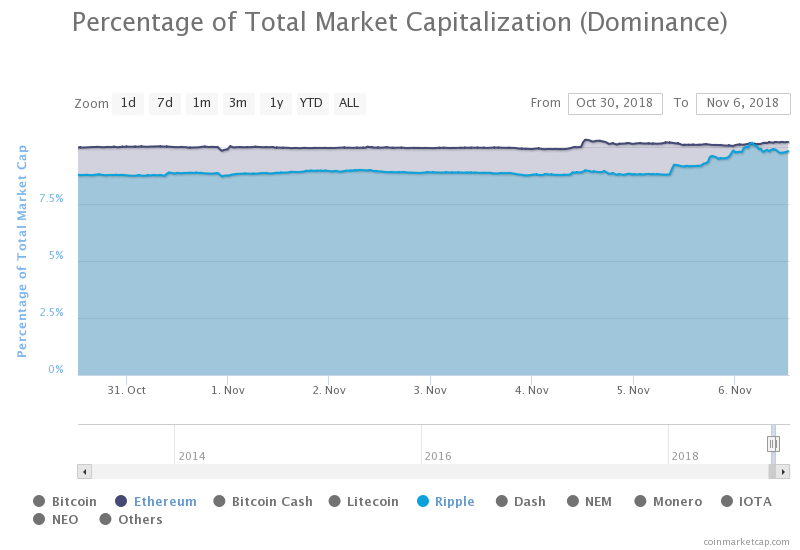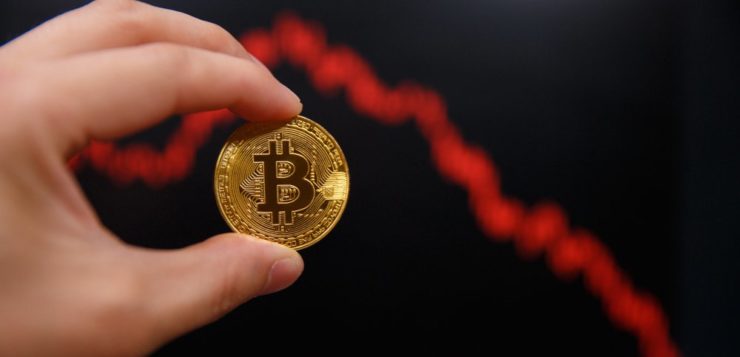Bitcoin market dominance has fallen to a monthly low of just over 51% of the overall market capitalization while Ripple and Bitcoin Cash have both rallied multiple percentage points over the past week.

Bitcoin’s overall value in the cryptocurrency market is an important barometer in the progress of the space as a whole. If Bitcoin were still at 100% value, then price shifts in its markets would impact the overall capitalization a lot more than they do now.
Ripple Steadily Upwards, Near Coupling With Ether
Ripple’s market performance is the most notable as of late, pushing to be almost equal with Ethereum. Ethereum’s demand comes from many dozens of sources on a regular basis as token platforms require it to operate and process transactions and ICOs launch. Ripple’s demand is a bit more tricky and reliant on the needs of large institutions which have in the past few years integrated the platform as a means of moving money cheaply across borders.

Ripple continues to impress, having weathered a long winter of low valuations and pushing ever further toward realistic dollar parity. By this, we mean parity which is not wholly reliant on the astronomical price of Bitcoin – that someone is actually willing to take a single dollar and exchange it for a single Ripple, which might be different than prices reflected on BTC/XRP charts on a given day. Nevertheless, at present, they stand at more than 50 cents a token.
Looming Fork Propels Bitcoin Cash
Many factors go into the recent rise both in price and volume on Bitcoin Cash, but likely the most important is the upcoming hard fork in which there will again be two major camps around the currency. The same people who forked Bitcoin into Bitcoin Cash are now actively working to fork Bitcoin Cash into something else.
The prospects of a viable tertiary fork growing out of Bitcoin Cash are an arbitrage opportunity that many veteran crypto traders recognize – when the Bitcoin Cash fork happened, anyone who’d bought Bitcoin prior to the fork and was holding it then immediately also held Bitcoin Cash, which started out trading rather high.
It is likely that this is the primary motivating factor to the increased demand and volume surrounding Bitcoin Cash, but certainly, other factors are at play such as the budding ecosystem and economy around the crypto.
While Bitcoin maximalists may not like to hear it, a decline in the market dominance of Bitcoin over the entirety of the crypto market capitalization is likely a positive sign of health. Liken it to franchising – the flagship store might not be doing as well as it always was, but the franchises are growing up nicely.
It is also worth noting that it is not a zero-sum game. In several cases, the newer entrants to crypto might not have entered at all if it were a strictly Bitcoin world they were looking at. Ethereum, in particular, presents a number of opportunities for investing and utilization of the blockchain that companies and individuals have been attracted to, and Ripple primarily serves large institutions. Together they represent almost 20% of the total market cap at present, so their contributions are not to be taken lightly.
Featured image from Shutterstock.
Follow us on Telegram or subscribe to our newsletter here.








